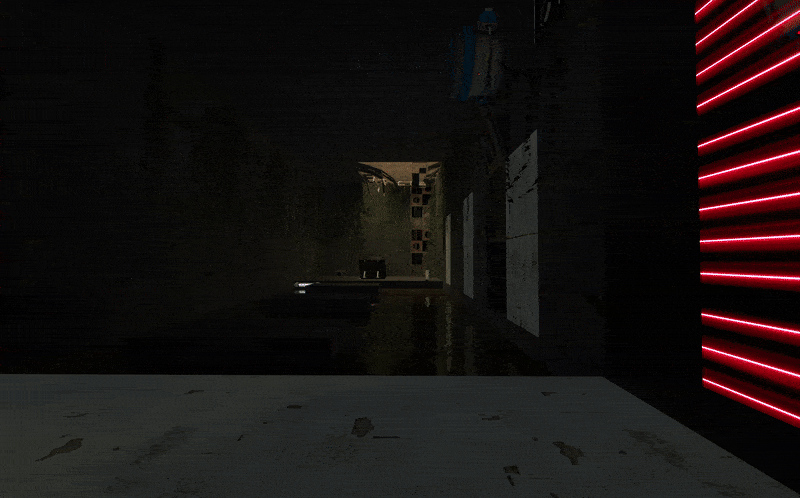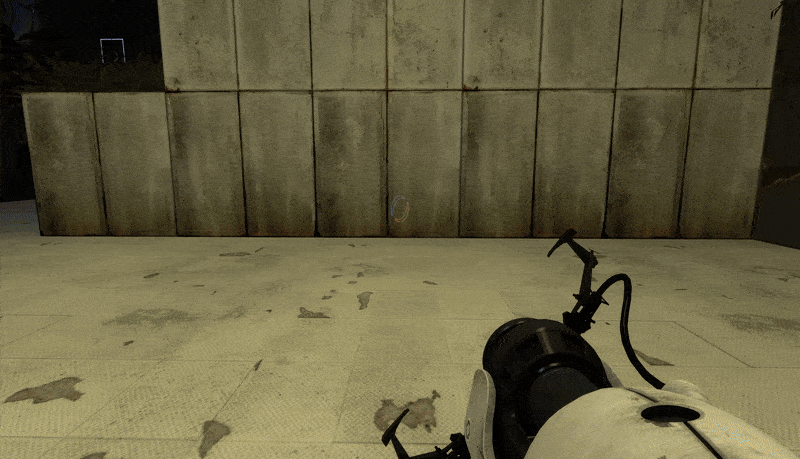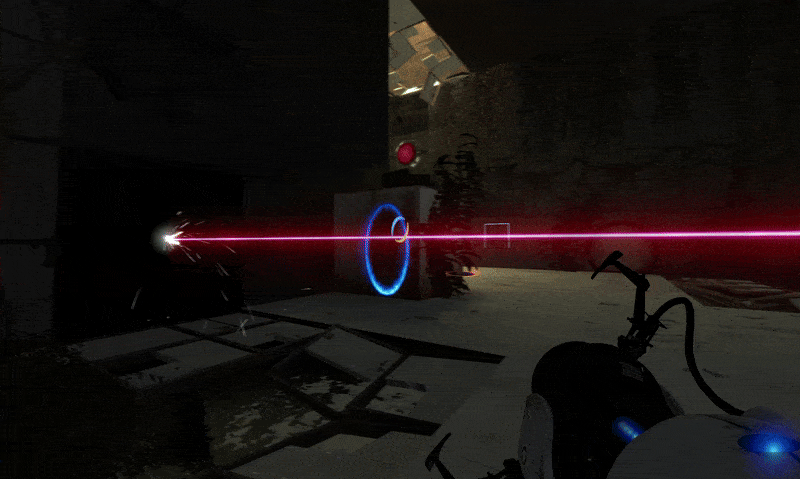


Project work summary
While working on Abandoned Facility, I worked on puzzle design. I created a series of puzzles, in the Portal 2 level creator, and then combined certain aspects of each, to then port over to Hammer Editor. I dealt with debugging puzzle components as well as implementation of art assets.
ProjecT Summary
For the past 50,000 years, Aperture Science's facilities have been left to rot and decay. On her journey to free herself from Aperture Science's clutches, Chell runs into one of the organization's well defended production facilities. She must bypass the facility's defenses and escape to continue her fight against Aperture Science!
Production Summary
Project Title: Abandoned Facility
Project Platform: PC
Project Engine: Hammer Editor
Project Timeline: January 2025 - May 2025
My Role

Being the sole developer on Abandoned Facility, I was tasked with designing, implementing, testing, and improving the puzzle. I would play Portal in an effort to get a better understanding of the game's puzzle philosophy. Using this knowledge, I created puzzles in Portal 2's puzzle editor and test them for challenge and clarity.
As a solo developer, I had to also bridge the gaps of other disciplines. I found that Portal 2 has a large array of assets that were already engine ready for Hammer Editor. I took on the primary responsible of implementing and debugging aspects of the puzzle. While this doesn't directly require programming, it requires similar thought processes and puzzle solving abilities needed.
Level Design Process
Since Abandoned Facility was a level constructed around a pre-existing game, with a set of previously defined rules, the design/iteration process taken to reach the final product was quite different from levels I had worked on previously. Said process can be broken down into seven steps:
1. Research the Portal franchise's puzzle design philosophy
2. Produce my own puzzle design philosophy with this knowledge
3. Use Portal 2's puzzle editor to quickly produce and test puzzle concepts
4. Create a graybox of my finalized puzzle by combining the best aspects of each concept
5. Test the level to see if it works well within the confines of Portal 2's puzzle design philosophy. Continue iterating and testing until it does
6. Implement and debug all puzzle components. Continue debugging and fixing until the entire puzzle works
7. Implement modular asset kit to replace place holder assets


Developing a Puzzle Design Philosophy

Another key aspect of Abandoned Facility's puzzle design philosophy is having "multiple solutions" to the puzzle. While the design has one ideal solution, there are branching solutions created by the layout of the space. While any tricks that complete break the puzzle were tested and removed, some clever alternative solutions were kept to increase player agency.
The final major component of the puzzle design philosophy of Abandoned Facility, is that the puzzle should be building upon the previously taught skills. Creating a teaching experience for puzzle components is critical to creating a form of progression throughout the puzzle.
When it came to designing the puzzle for Abandoned Facility, a puzzle design philosophy needed to be created and adhered to. To discover the puzzle design philosophy of Abandoned Facility, the puzzle design philosophy of Portal needed to be studied. Playing Portal and watching analysis videos were the two methods used.
After using these two methods, the puzzle design philosophy of Abandoned Facility was devised. The puzzle needed to not be obvious. It needed to have an option that seemed like the answer, but wasn't. This requires the player to critically think about the solution to the puzzle. It also allowed for a feeling of accomplishment when the answer to the puzzle was discovered.

Post Mortem
Working on Abandoned Facility taught me how to meaningfully take feedback into consideration and implement the changes efficiently.
Abandoned Facility's development was on the tightest timeline I'd ever worked on. The entire base product needed to be complete in about two months. The rest of the development time needed to be put into polish and testing. This meant I needed to quickly create a solid basis for the puzzle to eventually iterate upon.


Due to minimal time to actually develop the project, feedback to improve my rough prototype was critical. Feedback I gathered allowed me to fix many issues I wasn't able to see. Such as, lack of clarity in certain puzzle elements, confusion in the overall direction of the puzzle, and lighting issues. Feedback was critical in making sure these issues were dealt with before completion of development.
While I know how to take feedback and incorporate it into projects I'm working on, I had never relied on it as much as I did with Abandoned Facility. Testing is the only way to know if a puzzle game is successful in accomplishing what it set out to do. So getting the opportunity to work on a puzzle game allowed me to get a more meaningful understanding of feedback's importance in game development.